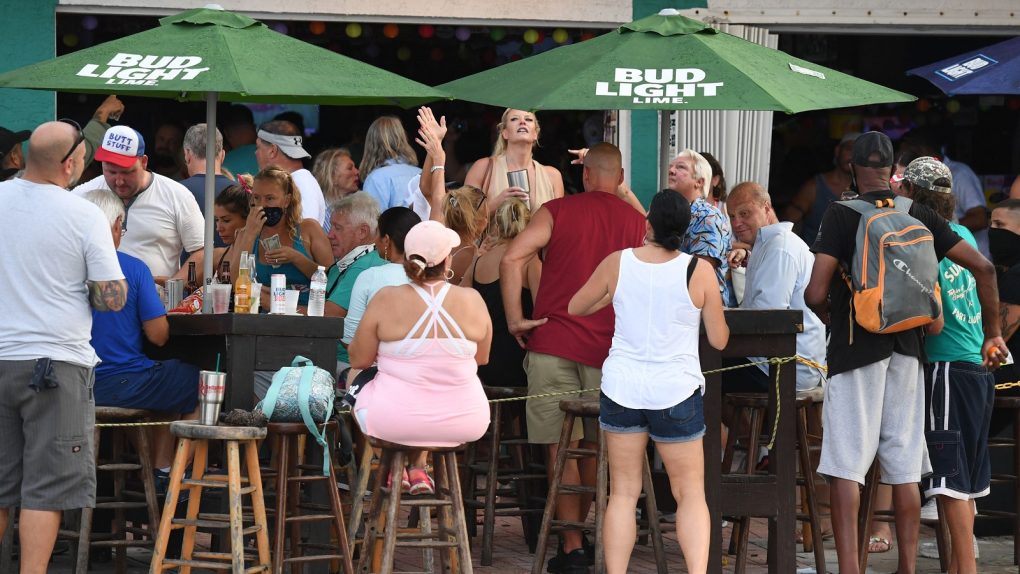The Centers for Disease Control and Prevention (CDC) announced Friday that it would delay the release of new safety guidelines for people who received the full COVID-19 vaccine regimen. A few days earlier, the agency said that new recommendations for safe activities would be available for vaccinated people. The new guidelines will address various scenarios, including indoor meetings without masks for small groups of people where everyone in attendance has been vaccinated. The CDC also warned that the number of new cases is plateauing between 60,000 and 70,000 per day, after weeks of steady decline. Those numbers are still too high, CDC Director Rochelle Walensky said.
She echoed recent remarks from top health officials about the relaxation of restrictions in some states, emphasizing mask-wearing. Several states announced their intention to lift face mask mandates in recent days, including Texas. “I know the idea of relaxing mask-wearing and getting back to everyday activities is appealing. But we’re not there yet,” Walensky said on Friday. The CDC released a new study showing that face masks are associated with a lower number of COVID-19 cases and deaths. Meanwhile, indoor dining has been directly linked with an increase in cases and deaths, according to the same research.
“Mandating masks was associated with a decrease in daily COVID-19 case and death growth rates within 20 days of implementation,” the CDC concluded in the new study. “Allowing on-premises restaurant dining was associated with an increase in daily COVID-19 case growth rates 41–100 days after implementation and an increase in daily death growth rates 61–100 days after implementation.”
CDC researchers looked at how mask mandates influenced the daily number of cases and deaths in the US at a county level, analyzing data between March 1st and December 31st, 2020. The authors also looked at how lifting restrictions impacted the evolution of local COVID-19 epidemics, focusing on indoor restaurant restrictions.
Mask mandates were implemented in 2,313 of 3,142 counties, the authors said. Mask mandates are associated with a 0.5% decrease in daily COVID-19 case growth rates 1-20 days after being implemented. There were then further decreases of 1.1% (21-40 days), 1.5% (41-60 days), 1.7% (61-80 days), and 1.8% (81-100 days). Coronavirus deaths dropped even more while the mandates stayed in place — 1.0% (21-40 days), 1.4% (41-60 days), 1.6% (61-80 days), and 1.9% (81-100 days).
Similarly, states allowed restaurants to reopen for on-premises dining during the period, with 3,076 counties lifting their restrictions to some degree. Changes in daily COVID-19 cases and deaths were not statistically significant during the 1-20 and 21-40 days after restrictions were lifted. But dining at restaurants indoors is believed to have led to an increase in coronavirus cases and deaths after 41 days. Cases increased by 0.9% (41-60 days), 1.2% (61-80 days), and 1.1% (81-100 days) after the restrictions were lifted. The number of COVID-19 deaths grew by 2.2% (61-80 days) and 3.0% (81-100 days), the study indicates.
The CDC explains that the growth in cases and deaths was not immediate after the restrictions were lifted because of various factors. Restaurants were not required to open, and patrons might have been more cautious in the early days after indoor dining was allowed. “COVID-19 case and death growth rates might also have increased because of persons engaging in close contact activities other than or in addition to on-premises restaurant dining in response to perceived reduced risk as a result of states allowing restaurants to reopen,” the authors said.
The novel coronavirus has an incubation period of 2-14 days, which means a person who catches COVID-19 while dining in a restaurant would not show symptoms for up to two weeks later. COVID-19 mortality statistics lag behind the number of cases, as people who develop complications might die weeks after being admitted to the hospital. This can also help explain the lag between the lifting of restaurant restrictions and the increase in COVID-19 cases and deaths.
Like any COVID-19 study, the CDC acknowledges that the study has some limitations that might have influenced the conclusions:
The findings in this report are subject to at least three limitations. First, although models controlled for mask mandates, restaurant and bar closures, stay-at-home orders, and gathering bans, the models did not control for other policies that might affect case and death rates, including other types of business closures, physical distancing recommendations, policies issued by localities, and variances granted by states to certain counties if variances were not made publicly available. Second, compliance with and enforcement of policies were not measured. Finally, the analysis did not differentiate between indoor and outdoor dining, adequacy of ventilation, and adherence to physical distancing and occupancy requirements.
“Community mitigation measures can help reduce the transmission of SARS-CoV-2,” the authors said. “In this study, mask mandates were associated with reductions in COVID-19 case and death growth rates within 20 days, whereas allowing on-premises dining at restaurants was associated with increases in COVID-19 case and death growth rates after 40 days. With the emergence of more transmissible COVID-19 variants, community mitigation measures are increasingly important as part of a larger strategy to decrease exposure to and reduce transmission of SARS-CoV-2. Community mitigation policies, such as state-issued mask mandates and prohibition of on-premises restaurant dining, have the potential to slow the spread of COVID-19, especially if implemented with other public health strategies.”
The full study is available at this link.








